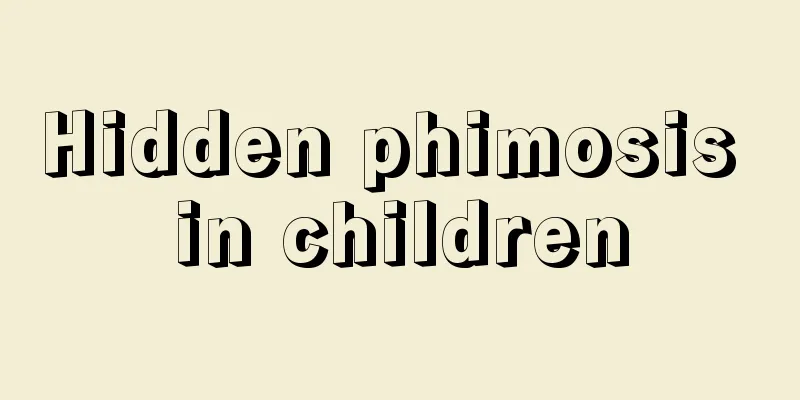Nine foods that babies should eat more during the beginning of autumn

|
As the beginning of autumn approaches, the climate becomes cooler, but the tormenting autumn dryness also comes with it. The baby's tender skin and weak stomach are very sensitive to autumn. Here are some foods suitable for babies to eat in autumn. Healthy immunity starts with cold prevention baby! 1. Lily Lily contains nutrients such as starch, protein, fat, minerals and vitamins. It not only has good nutritional and nourishing effects, but also has the effects of moistening the lungs, relieving coughs, refreshing and calming the nerves. It can also improve the baby's sleep quality and make the baby sleep more sweetly. How to feed it to your baby: Lily can be cooked into porridge, sweet soup, steamed and fried. Lily and Tremella fuciformis porridge has the effect of nourishing yin and moistening the lungs, strengthening the spleen and promoting body fluid. Food taboos: If the cough is caused by warm and dry conditions, the symptoms are: dry cough without sputum, itchy throat, dry mouth and nose. At this time, eating lilies can relieve the cough. However, if the cough is caused by cold and dryness, the symptoms are: constant coughing, clear and thin sputum, and cold back. At this time, you should not take cool foods such as lily. Suitable age: 6 months and above 2. Fungus There are two types of fungus: black and white. White fungus is often called snow fungus and white fungus. It is rich in gelatin, smooth and delicious, easy to digest, and is a nourishing food for the body. White fungus has the effects of nourishing yin, moistening the lungs, and promoting salivation. Boiling it with rock sugar and stewing it in water makes it an ideal product for nourishing yin and moistening the lungs. It can be used to regulate the baby's dry cough in autumn. The nutritional components of black fungus are similar to those of white fungus. Black fungus is very rich in iron, which can improve the baby's iron deficiency anemia. How to feed it to babies: Add appropriate amount of rock sugar to white fungus to make rock sugar white fungus for babies. Common ways to eat black fungus are stir-frying, steaming and boiling soup. It is best to cook it with pork, liver or poultry, which is nutritious and delicious. Food taboos: Fungus contains more dietary fiber, which can cause laxative effects and aggravate diarrhea symptoms. Babies with diarrhea should not eat it. Suitable age: Babies over 1 year old 3. Lotus Root The weather becomes increasingly drier in autumn. Lotus root contains a lot of easily absorbable carbohydrates, vitamin E, zinc, manganese, potassium, magnesium, etc. Eating fresh lotus root raw can help babies clear away heat and promote salivation, moisten the lungs and relieve cough. It is especially suitable for babies with internal heat, and has a unique effect on preventing and treating autumn dryness. The medicinal properties of cooked lotus root change from cool to warm. It no longer has the function of dispersing blood stasis and clearing away heat, but becomes beneficial to the stomach and spleen, nourishing blood and replenishing deficiency. It is especially suitable for babies with weak spleen and stomach and those after illness. How to feed it to babies: Babies over 6 months old can steam the lotus root and make it into lotus root paste. Babies over 1 year old can stir-fry the lotus root. Babies over 2 years old can eat the lotus root cold. You can also put kelp, lotus root and pork ribs together to make soup for your baby. Food taboos: Babies with poor spleen and stomach should not eat lotus root raw. Suitable age: 6 months and above 4. Taro Taro has a soft texture, is sweet and glutinous, has nutritional value similar to that of potatoes, and is easy to digest. Taro is rich in protein, calcium, phosphorus, iron, potassium, magnesium, sodium, carotene, niacin, vitamin C, B vitamins and other ingredients. Its rich nutritional value can improve the baby's resistance. How to feed it to your baby: You can boil or steam the taro, mash it into taro paste and feed it to your baby. You can also steam the taro, mash it into paste and mix it with flour to make taro cakes for your baby. Food taboos: The mucus in taro will irritate the throat mucosa, which may aggravate the cough and produce more phlegm, so babies who cough and have phlegm are not suitable to eat taro. Suitable age: 1 year old and above 5. Duck What nutrients does duck meat provide for your baby: Duck meat is rich in protein, fat, calcium, phosphorus, iron, vitamin B1, vitamin B2, vitamin B5 and other nutrients. Duck meat tastes sweet, salty, and slightly cool in nature. It can clear away heat. Babies who are prone to getting angry, hot, dry throat, and thirst in autumn can eat duck meat in moderation to play a clearing and tonic role. How to feed your baby: You can make duck meat into duck soup for your baby, or you can use the duck soup to cook porridge for your baby. Older babies can eat duck braised with chestnuts. Chestnuts have the effects of nourishing yin and kidneys, strengthening the body and bones, benefiting the stomach and calming the liver, and they complement each other when eaten with duck meat. Food taboos: Duck meat is cold, so babies with diarrhea and weak spleen and stomach should not eat too much. Suitable age: 9 months and above 6. Radish Radish contains more water, vitamin C and a certain amount of calcium, phosphorus, carbohydrates. It also contains a small amount of protein, iron and other beneficial ingredients, and has the effect of clearing heat and reducing phlegm. The effects of eating radish raw or cooked are different. Eating it raw can quench thirst and clear internal heat, while eating it cooked can help digestion and strengthen the spleen. Radish can regulate the spleen and stomach, and also has an auxiliary therapeutic effect on common autumn diseases such as indigestion, wind-heat colds, tonsillitis, cough and asthma with sputum, sore throat, etc. How to feed it to babies: For small babies, the radish can be stewed until it is soft. For older babies, it can be stewed or fried, but it is best to eat it raw. Food taboos: It is best to feed your baby cooked radish when his chewing ability is still weak before he is 1 year old. Suitable age: 6 months and above 7. Pumpkin The climate is dry in autumn, and many children will experience varying degrees of symptoms such as chapped lips, nasal bleeding, and dry skin. Experts suggest that feeding babies foods rich in vitamin A and vitamin E can enhance children's immunity and is beneficial for improving the symptoms of autumn dryness. The beta-carotene contained in pumpkin can be absorbed by the human body and converted into vitamin A, which is very helpful for protecting the baby's eyes. How to feed it to your baby: Pumpkin has high nutritional value. In addition to being made into soup and paste, it can also be cooked into porridge, steamed, boiled, and cooked with rice. Food taboos: Do not eat pumpkin with vinegar, as the acetic acid will destroy the nutrients in the pumpkin. Suitable age: 6 months and above 8. Cauliflower Cauliflower has a tender texture and is easy to digest and absorb. It contains nutrients such as protein, fat, carbohydrates, dietary fiber, multiple vitamins and minerals. Cauliflower is high in vitamin C, which is not only beneficial to the baby's growth and development, but more importantly, it can improve the body's immune function, strengthen the body, and increase disease resistance. How to feed it to babies: For younger babies, you can boil the cauliflower, mash it into a paste and add a little salt to feed it to the baby. For older babies, you can stir-fry tomatoes and cauliflower together. It tastes sweet and sour and is rich in nutrients. Food taboos: It is best not to add soy sauce when making cauliflower cold dishes. If you prefer the taste of soy sauce, you can add a little light soy sauce. Suitable age: 6 months and above 9. Honey Honey is a nutritious natural nourishing food and one of the most commonly used tonics. Honey contains calcium, potassium, phosphorus and other inorganic salts and iron, copper, manganese, trace elements beneficial to human health, as well as nutrients such as vitamins, fructose, glucose, etc. Eating honey in the autumn can prevent the harm of "autumn dryness" to the baby and play a role in moisturizing and nourishing the lungs. How to feed your baby: Take 25 grams on an empty stomach every morning and evening, with warm water not exceeding 60°C. Food taboos: Honey should not be taken with boiled water. Taking honey with boiling water will destroy the enzyme substances in the honey and produce excessive carboxymethyl furfural, which will greatly destroy the nutritional components of the honey. In addition, taking it with hot water will affect the sweet taste of honey and make it sour. Suitable age: 1 year old and above |
<<: The 4 most annoying parenting keywords for dads
Recommend
Migraine symptoms in children
Children are young, and their immunity and resist...
What should I do if my child has a bad temper?
Why are many babies relatively well-behaved while...
What are the recipes for baby's appetite and spleen?
Babies are the hope of their parents and the futu...
When is the peak period for hand, foot and mouth disease? Experts will tell you
As an infectious disease, hand, foot and mouth di...
Why do children cough when they have a fever?
Compared with adults, children have relatively po...
What to do if a five-year-old child has stomachache?
When a five-year-old child has a stomachache, mos...
Baby's throat is always wheezing
If your baby's throat is always wheezing and ...
What to do if your baby's lips are dry and peeling
Cold and dry weather can easily lead to dry lips,...
Why is the skin on the child's hands peeling?
When people think of shedding skin, the first thi...
Infant suction device plus nursing treatment
After catching a cold, many babies still have dif...
How to support newborns
The physical health of newborns is an issue that ...
How to treat pinworm disease in children
I believe that many mothers do not know the cause...
What is the matter with the two-year-old baby vomiting and diarrhea?
Children's stomachs and intestines are not as...
What are the precautions for children to supplement trace elements? What are the symptoms of children lacking trace elements?
A child's lack of trace elements may have a s...
Do you know at what age children start to have big teeth?
It is a normal phenomenon for children to change ...









